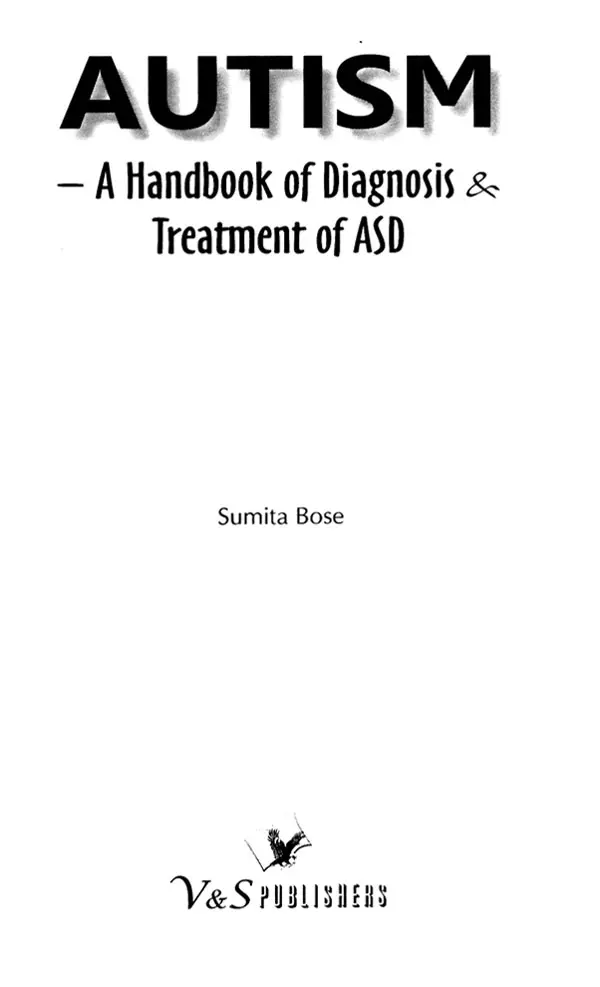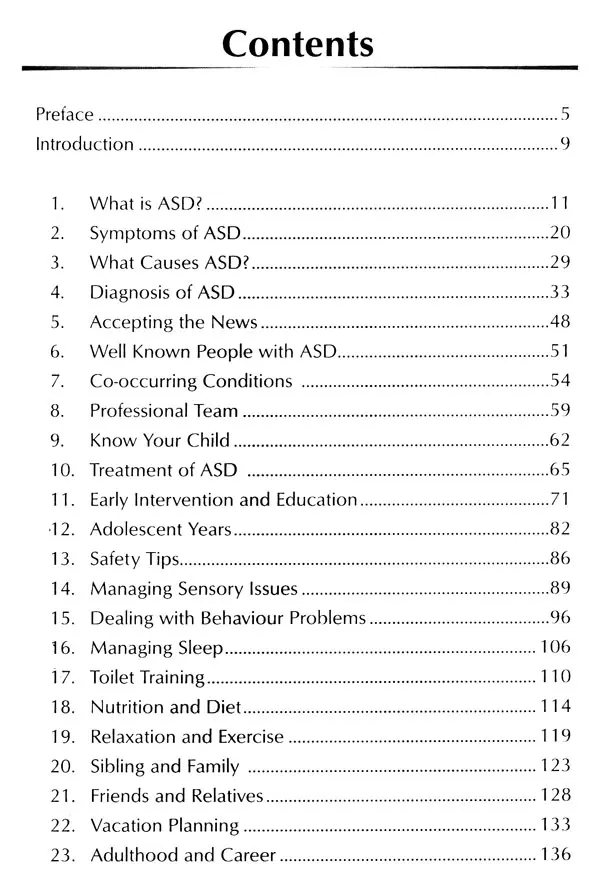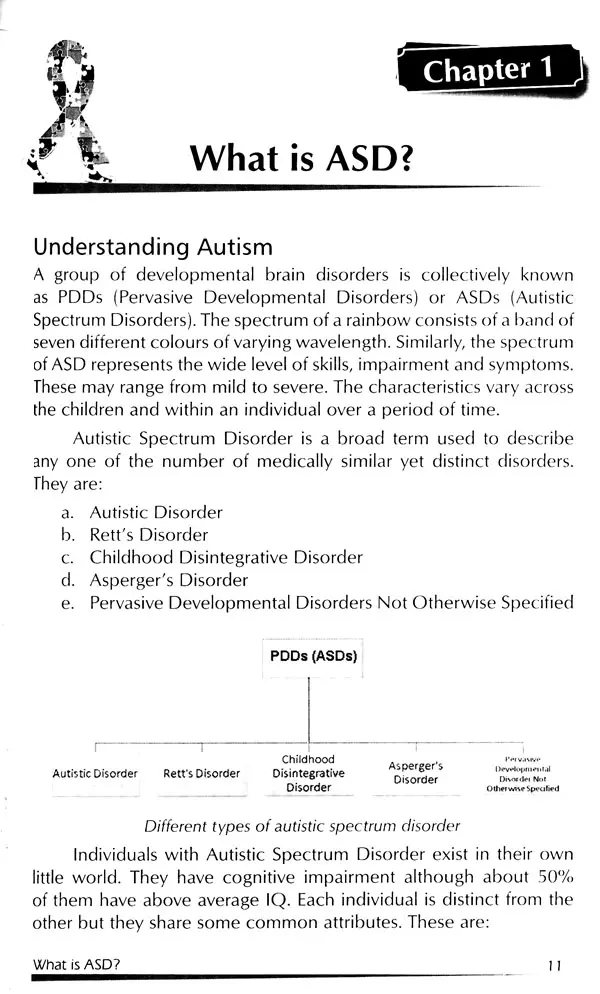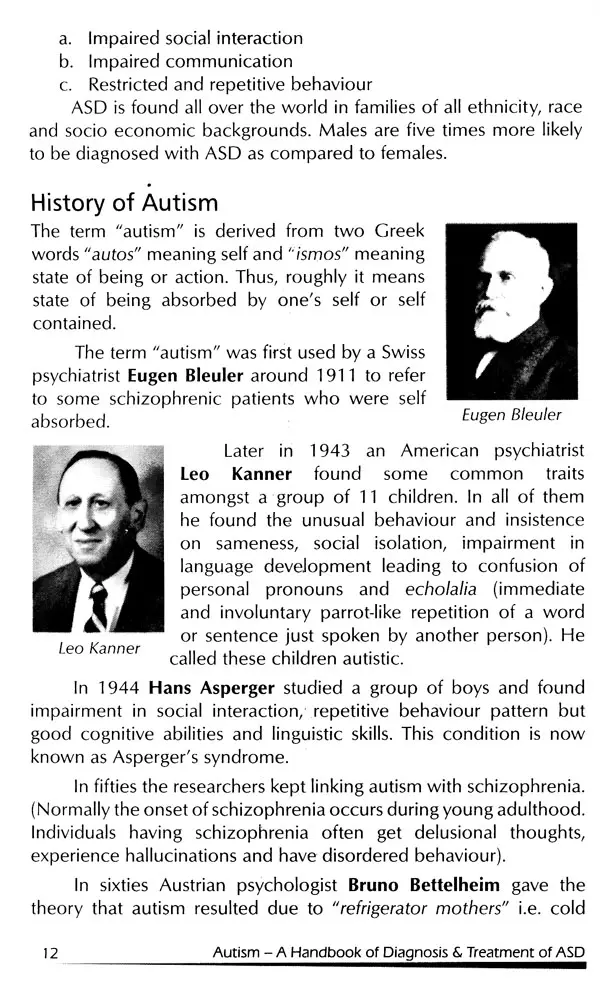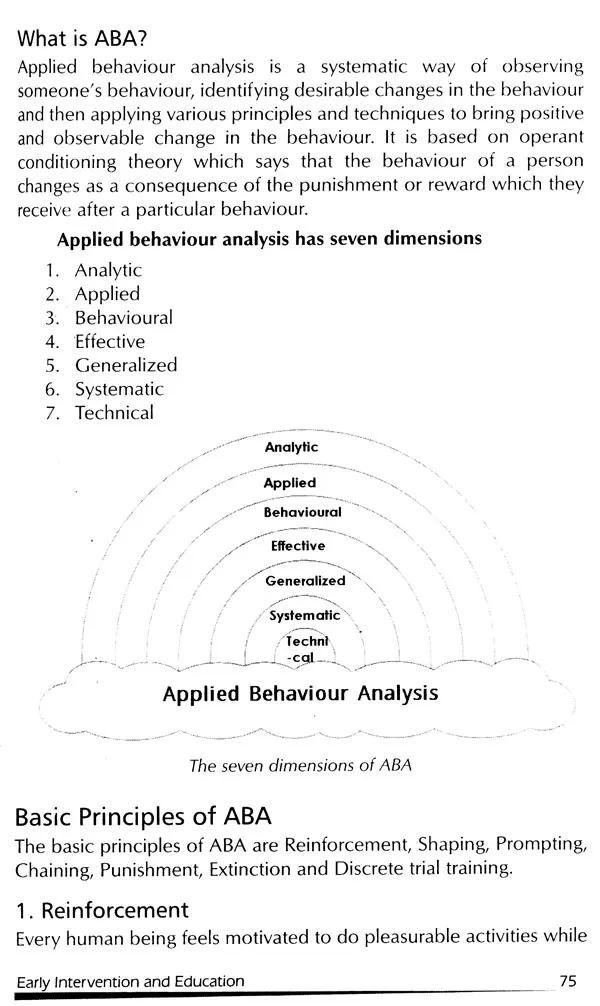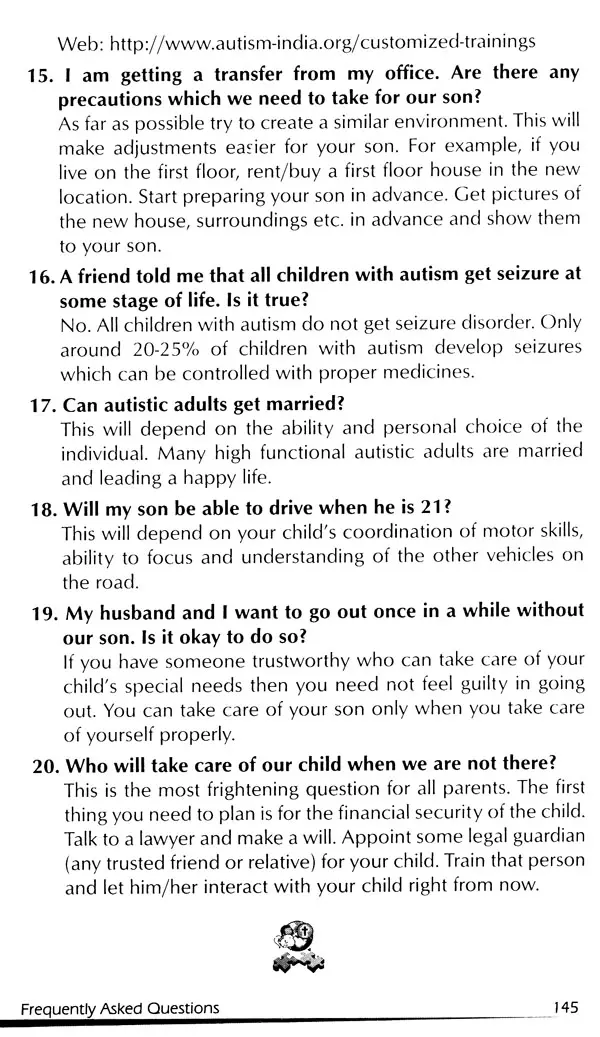
Autism- A Handbook of Diagnosis (Treatment of ASD)
Book Specification
| Item Code: | UAY471 |
| Author: | Sumita Bose |
| Publisher: | V&S PUBLISHERS, Delhi |
| Language: | English |
| ISBN: | 9789357940115 |
| Pages: | 160 (Throughout B/w Illustrations) |
| Cover: | PAPERBACK |
| Other Details | 8.50 X 5.50 inch |
| Weight | 180 gm |
Book Description
"Autism-A Handbook of Diagnosis & Treatment of ASD" discusses signs, symptoms, causes, mythic, facts, therapies, treatment, education, career and many more things related to autism. It provides practical advice so that the special child can lead a quality life to the extent possible.
Arushi joined back work after three months of maternity leave. I kept myself update by knowing about the developments of the child. After about another three months, one day Arushi told me that there was something different about Rohit (Arushi's son). He did not respond to his name, did not look at her or her husband when they called him. I asked her "Are you sure Rohit does not have any hearing problem?" To that she told me "No, his hearing seems to be fine since he listens to music and enjoys it too." Then I jokingly told her maybe he will become a great musician like Tansen so he concentrates on music and not on spoken words but advised her to talk to Rohit's pediatrician.
Next week she told me that the pediatrician has referred them to the neurologist, psychologist as well as the psychiatrist. Rohit went through a series of tests and was finally diagnosed with autism. That was the first time when I heard the word autism. Worried and surprised asked her what it meant, what needs to be done etc. She told me that she herself did not know much about it. The only thing she knew was that it was not curable across the world.
In order to help her I went to several book stores to look for a book on autism but could not find any. Most of the booksellers were surprised to hear the word autism. Internet was in its infant stage so there wasn't an easy access to it. I was feeling extremely helpless. The only thing could do then was to give moral support to Arushi.
At that time I wished if could travel to Europe or USA and acquire some knowledge on psychology and Autism it would be wonderful. My wish was fulfilled several years later.
Although the prevalence rate is alarmingly high yet very few people know this neuro developmental disorder by its name or signs and symptoms. Diagnosis is often delayed as many doctors treat the children as "slow" or "mentally retarded" or "schizophrenic". Since 90% of the brain develops by age five, early diagnosis followed by immediate intervention is extremely important.
The first and foremost thing of early diagnosis is the mass awareness. It is aptly said by psychologist Nathaneil Branden - "The first step towards change is awareness. The second step is acceptance." The parents, grandparents, caregivers, teachers and doctors need to be aware of the developmental milestones as well as the warning signs.
In this book I have provided not only the warning signs and the expected developmental milestones but also other informative text which will answer many common questions which the parents have? in their mind after the diagnosis of ASD in their child.
One of the parent's once commented "My entire world came to a standstill when I got to know the difficulties a person could have with autism." No doubt autism is a challenge but it is not a life sentence. It is life with a difference.
**Contents and Sample Pages**
